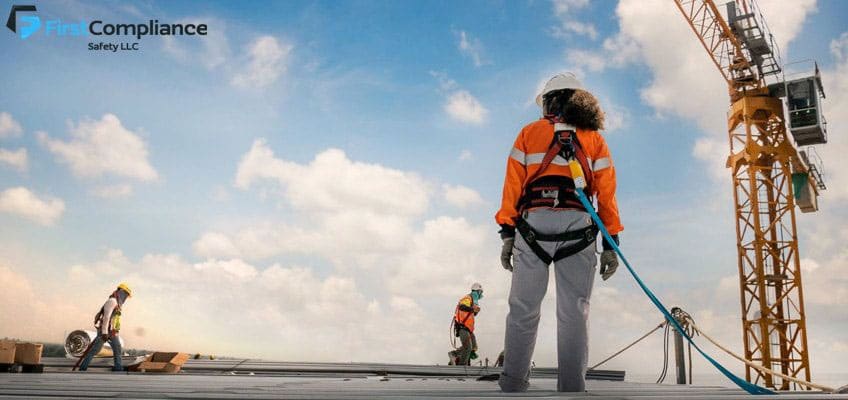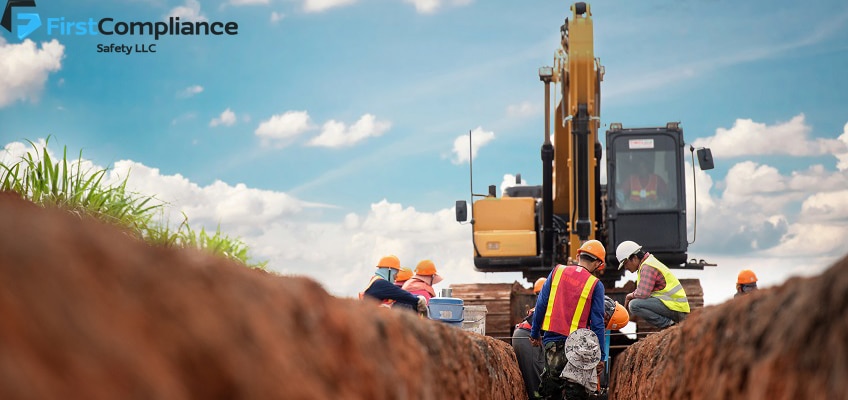
There are many reasons for using machines to lift loads within a construction site. This practice both saves time and prevents worker injuries. However, suspending a load in the air presents a whole new set of hazards. If a load is so heavy that it must be lifted by a piece of heavy equipment, then a fallen load can seriously injure or kill any unsuspecting employees on the ground. In today’s Toolbox Talk, we will discuss how to prevent the common hazards caused by suspended loads.

Ladders are a common cause of injuries within worksites. In fact, OSHA statistics state that nearly ⅓ of all falls occur from ladders. These falls can be as painful as a fall from a roof. Many fall-related injuries result from the improper use of a ladder, or the use of a defective ladder. Use this Toolbox Talk with your employees to ensure that they use the correct ladders for different tasks, and to ensure that they follow all safety precautions when using ladders…

Communication is very important on a construction site. When we work with heavy machinery and vehicles (such as forklifts and cranes), this communication occurs in the form of hand signals. In today’s Toolbox Talk, we will discuss the importance of proper signaling, and how to use your hands to communicate with drivers/operators.

While moving through safety training programs and Toolbox Talks, it is easy to overlook motor vehicle safety. Contractors work with such an array of specialized equipment and materials, it is understandable for one to take their driving skills for granted. After all, most of the population drives every day – wouldn’t you expect these safety standards to be mutually understood? However, this is far from the truth. In fact, in the oil and gas industry – the most dangerous industry for a contractor….

As a contractor, your company likely performs work that involves trenching and excavation. These tasks are extremely dangerous, and without proper precautions they can prove to be deadly. In fact, according to OSHA, two workers are killed every month in trench collapses. Go over this Toolbox Talk with your employees to ensure their safety in all trenching and excavation tasks. Guidelines for Discussion: First, let’s go over some basic definitions. An excavation is a cavity in the earth’s surface, intentionally formed via earth removal. A trench is a specific kind

In this Toolbox Talk, we will talk with your employees about the different ways that they may experience difficulties while performing their jobs. This talk is important because your employees need to know what is considered relevant to their work, and what is important to communicate to you (their employer). After all, you can’t make considerations for someone unless you understand what they are going through..

As the seasons change, you should prepare your employees for working in cold weather. Though it may be obvious that low temperatures require special consideration, it may not be easy to gauge exactly how and when to protect oneself against the elements. Employees working outdoors face the risk of hypothermia, frostbite, and impaired sensory awareness. Additionally, snow and ice increase the risk of falls and struck by/caught between accidents. Use this toolbox talk to help your employees adequately protect themselves and one another in the winter months…

In order to exercise proper safety procedures within a worksite, employees first need to understand how to recognize unsafe conditions. In fact, it is impossible to build a truly safe environment unless every employee understands how to identify the hazards around them. Without these basic tools, any other safety programs and practices will not be fully effective. For instance, an employee may understand how to put on his respirator, but this knowledge is useless unless he knows how to look for the signs of a gas leak…